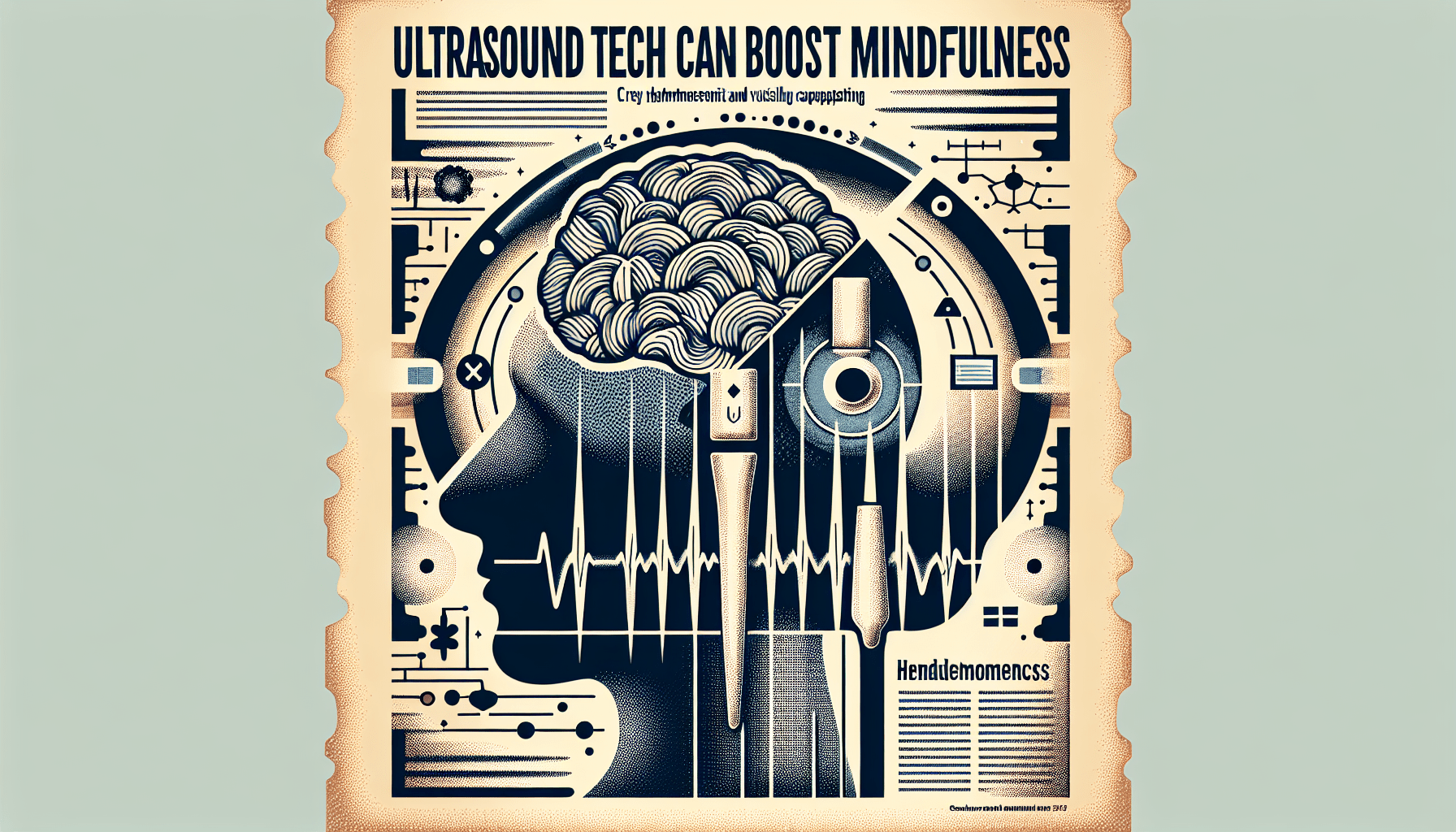Have you ever wondered how mindfulness can alleviate pain? The concept may sound intriguing, but for those who have long suffered from chronic pain, the idea can initially seem dubious. Many patients express skepticism towards mindfulness meditation, a form of cognitive behavioral therapy frequently recommended as an alternative treatment for pain management.
Let’s explore the findings from recent studies that shed light on the actual mechanisms at play. The revelations from brain imaging studies may not just change how you perceive mindfulness but could also offer you a new, effective way to mitigate pain without medication.
The Skepticism Around Mindfulness
Chronic Pain Sufferers’ Mixed Reactions
chronic pain patients often have mixed feelings about mindfulness meditation. Over the years, various comments reflect these sentiments:
- “Mindfulness is helpful. But it is only helpful when the pain is under control enough to implement it. If you are rocking back and forth from excruciating pain, any alternative therapies are useless.”
- “Mindfulness may distract from pain while you are doing it. But it doesn’t have any long-lasting effects.”
- “Mindfulness is lazy hippie horseshit. It’s not medicine. It’s not science. It’s not therapy.”
These comments underscore a common skepticism―does mindfulness meditation really offer tangible relief, or is it merely a distraction with no lasting impact?
Groundbreaking Study in Biological Psychiatry
Study Overview
A new study published in Biological Psychiatry counters much of this skepticism with physical evidence. Researchers at the University of California San Diego School of Medicine employed advanced functional magnetic resonance imaging (fMRI) to compare the pain-reducing effects of mindfulness meditation against placebo treatments.
Methodology
The study involved 115 healthy volunteers who were randomly divided into four groups:
- Guided Mindfulness Meditation: Participants underwent a structured session focused on mindfulness.
- Sham Mindfulness: This group practiced deep breathing without the mindfulness elements.
- Placebo Cream: Participants were given a cream and told it reduced pain.
- Control Group: This group listened to an audiobook and did not receive any other form of intervention.
Researchers then administered a painful but harmless heat stimulus (120°F) to the back of the leg to evaluate pain responses before and after the interventions.
Findings
The outcomes were compelling. Compared to the other groups, mindfulness meditation yielded the following results:
- Lower Pain Intensity: Participants reported a significant reduction in pain intensity.
- Reduced Pain Unpleasantness: Mindfulness effectively decreased the unpleasantness associated with pain.
- Decreased Brain Activity Related to Pain and Negative Emotions: The fMRI scans revealed that areas associated with pain and negative emotions were less active.
Both sham mindfulness and the placebo cream also reduced pain, but mindfulness meditation was considerably more effective.

How Mindfulness Alters Brain Activity
Neural Mechanisms
One of the most fascinating elements of this study is its dissection of the neural processes involved. Researchers discovered that mindfulness reduces the synchronization between brain regions tied to introspection, self-awareness, and emotional regulation. These areas make up the so-called neural pain signal (NPS), a brain activity pattern common to all types of pain across different individuals.
Placebo vs. Mindfulness
Interestingly, the placebo cream and sham mindfulness did not show significant changes in the NPS compared to controls. These interventions activated entirely different brain mechanisms, underscoring the unique impact of mindfulness meditation.
Expert Insights
Dr. Fadel Zeidan, the lead author of the study, emphasizes that the brain’s response to mindfulness meditation is distinct from the placebo effect. This suggests that mindfulness serves as a direct intervention for chronic pain rather than merely leveraging the placebo effect.
Practical Implications and Future Research
Strategies for Pain Management
Understanding the unique neural pathways activated by mindfulness can pave the way for more effective pain management techniques. Mindfulness can potentially be a low-cost, accessible method to alleviate chronic pain without involving pharmaceuticals.
Case Studies and Real-Life Applications
In a 2018 study by Zeidan, similar outcomes were noticed in the posterior cingulate cortex, a brain region responsible for processing thoughts, feelings, and emotions. Participants with lower pain levels exhibited reduced activity in this area, reinforcing mindfulness’s role in pain reduction.
The Bigger Picture
Millions of people suffer from chronic pain daily. While traditional pain management techniques offer relief, there is still limited understanding of the multi-faceted nature of pain and its management. By delving deeper into how mindfulness affects the brain, researchers hope to design better interventions to harness its benefits.
Common Misconceptions About Mindfulness
Mindfulness as a Temporary Distraction
A repeated criticism of mindfulness is its perceived temporary effectiveness. While mindfulness practice may initially serve as a distraction, the deeper changes in brain activity indicate long-lasting therapeutic benefits.
The Scientific Validity of Mindfulness
Skeptics often dismiss mindfulness as unfounded. However, ongoing research increasingly validates its efficacy. As new studies continue to shed light on its neural mechanisms, mindfulness is gaining recognition as a viable and science-based intervention for chronic pain.
How to Practice Mindfulness for Pain Management
Basic Techniques
- Breathing Exercises: Start with focused breathing, inhaling deeply and exhaling slowly to create a calm state of mind.
- Body Scans: Mentally scan your body, noting areas of tension and consciously relaxing them.
- Guided Meditation: Use audio recordings or attend classes to help guide and structure your mindfulness practice.
Developing a Routine
Consistency is key. Dedicate a specific time each day for mindfulness meditation. Whether it’s 10 minutes in the morning or a longer session before bed, regular practice can significantly enhance its effects.
Mindfulness in Daily Life
Integrate mindfulness into your daily activities. Whether you’re eating, walking, or simply pausing to breathe, being mindful can help reduce stress and pain over time.
Challenges in Adopting Mindfulness
Initial Resistance
Overcoming skepticism is often the first hurdle. Chronic pain sufferers may find it challenging to believe in the effectiveness of mindfulness, particularly when pain is overwhelming.
Consistency
Maintaining consistent practice can be difficult, especially when immediate results are not evident. Support from healthcare providers and mindfulness communities can be beneficial.
Measuring Effectiveness
While subjective pain relief is crucial, keeping track of mindfulness’s impact through pain diaries or other tools can provide a clearer picture of its benefits.
Future Directions in Mindfulness Research
Advanced Imaging Techniques
Ongoing advancements in imaging techniques like fMRI will further illuminate how mindfulness interacts with various brain regions.
Personalized Mindfulness Practices
Future research may lead to personalized mindfulness interventions tailored to individual pain profiles, enhancing its effectiveness.
Final Thoughts
Mindfulness, long met with skepticism by many chronic pain sufferers, is gaining scientific validation through groundbreaking research. By understanding its unique impact on brain activity related to pain, mindfulness meditation is emerging as a promising approach in the realm of pain management. With ongoing research and increased awareness, mindfulness could offer millions of individuals a new, effective way to manage pain and improve their quality of life.
In embracing mindfulness, you may find not just a method to alleviate pain, but a holistic approach that positively transforms how you interact with your body and mind.






